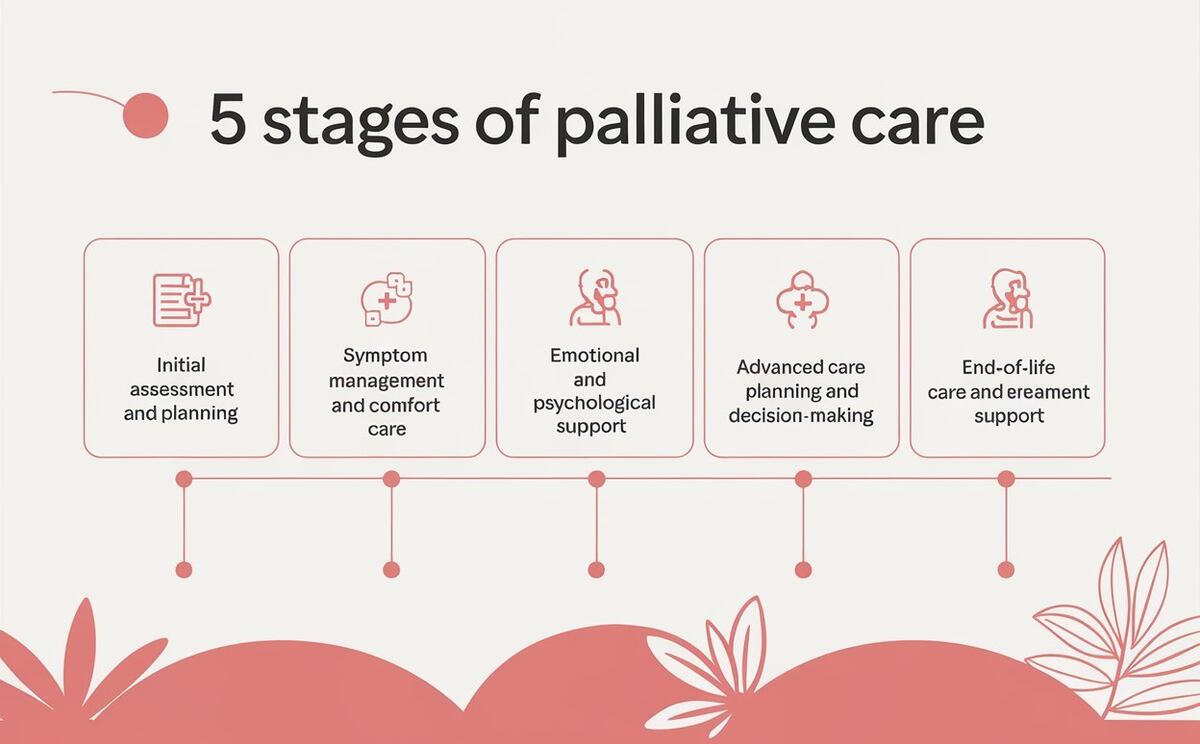Palliative care is an important part of modern healthcare, aimed at providing comprehensive support for individuals with serious or chronic illnesses. Often misunderstood as synonymous with end-of-life care, palliative care is far more encompassing, focusing on improving the quality of life for patients & their families at any stage of a serious illness. This blog explores the stages of palliative care, its benefits, and common misconceptions.
What Is Palliative Care?
Palliative care is specialized medical approach that prioritizes the physical, emotional, psychological, & spiritual well-being of individuals with chronic or severe illnesses. It can be provided alongside curative treatments, ensuring holistic support for patients as they navigate their healthcare journey.
Unlike hospice care, which typically begins in the final stages of life, palliative care can start immediately after a diagnosis and continue throughout an illness. This distinction underscores its role as an integral part of long-term healthcare.
Stages of Palliative Care
Palliative care encompasses several stages tailored to the patient’s evolving needs.
Initial Assessment and Diagnosis
- Purpose: Establish a baseline for care by evaluating the patient’s medical condition, lifestyle, and personal preferences.
- Key Elements:
- Detailed medical history review.
- Collaborative discussions with patients and families.
- Setting realistic goals for treatment and quality of life.
Symptom Management and Comfort Care
- Purpose: Alleviate physical discomfort and improve the patient’s daily life.
- Common Interventions:
- Pain relief through medications or therapies.
- Management of symptoms like fatigue, nausea, or breathlessness.
- Incorporation of complementary treatments, such as massage or aromatherapy.
Emotional and Psychological Support
- Purpose: Address the emotional toll of chronic illness on patients and their families.
- Support Strategies:
- Counseling sessions to cope with anxiety or depression.
- Providing tools to improve mental resilience.
- Family support services to help loved ones navigate their caregiving roles.
Advanced Care Planning
- Purpose: Prepare for future healthcare decisions and establish a clear care trajectory.
- Key Benefits:
- Clarification of treatment preferences.
- Reduced stress for families during critical moments.
- Enhanced communication among patients, families, and medical teams.
End-of-Life Transition (if applicable)
- Purpose: Ensure comfort, dignity, and peace during the final stages of life.
- Focus Areas:
- Pain management.
- Emotional closure for patients and families.
- Spiritual care is tailored to the patient’s beliefs.
Benefits of Palliative Care
Palliative care offers range of benefits that extend beyond physical symptom relief:
- Enhanced Quality of Life: Patients experience improved comfort and reduced stress through personalized care plans.
- Emotional Support: Comprehensive counseling helps address fear, anxiety, or sadness.
- Family Involvement: Families receive guidance and support, fostering a collaborative care environment.
- Improved Communication: Clear discussions about medical goals help align expectations and reduce confusion.
- Holistic Well-being: Spiritual and psychological care ensures patients feel valued and supported throughout their journey.
Myths and Misconceptions About Palliative Care
Despite its numerous benefits, palliative care is often misunderstood. Here are some common myths debunked:
- Myth: Palliative care is only for the terminally ill.
- Fact: Palliative care can be initiated at any stage of serious illness and is not limited to end-of-life care.
- Myth: It replaces curative treatments.
- Fact: Palliative care works alongside curative therapies, enhancing overall treatment outcomes.
- Myth: It’s only about pain management.
- Fact: While pain relief is a core component, palliative care also addresses emotional, psychological, and spiritual needs.
How Palliative Care Transforms Lives
Palliative care is more than a medical intervention; it’s a philosophy of care that prioritizes dignity, comfort, and support. Addressing the full spectrum of a patient’s needs empowers individuals to live their lives to fullest, even in the face of significant health challenges. Families, too, benefit from its comprehensive approach, finding solace in the guidance and resources provided.
Final Thoughts
Palliative care is a testament to the healthcare system’s commitment to compassionate, patient-centered care. Patients & families can make informed decisions about incorporating palliative care into their healthcare plans by understanding its stages and benefits. Whether dealing with the early stages of a chronic condition or navigating the complexities of advanced illness, palliative care ensures that every individual receives the support they deserve.

















